| |
| |
|
The International
Energy and Environment Foundation (IEEF) organises a series
of annual conferences and exhibitions. IEEF also runs a series of
networking events. In addition IEEF hosts regular meetings and informal
workshops, as well as attending other conferences and exhibitions, a
number of which are supported by IEEF. |
| |
| |
|
1

Wind
Energy
2010 |
 |
The use of the wind as an energy
source is increasing and growing worldwide. Wind energy is an
important non-fossil option to supplement fossil fuels for the
generation of electricity. Currently wind energy is the fastest
growing energy source in the world and in some regions wind
energy has a very significant impact on the power system. This
has led to interesting development of the technology in order to
integrate it economically in the power system.
The "Wind Energy 2010"
event unites wind industry leaders with economic development
groups, municipalities, and consumers eager to play a bigger
role in the use and expansion of wind energy and its economic
potential. This event was showed ways to play a bigger role in
the use and development of wind generated and used on-site and
that it is not just an alternative, but a realistic opportunity
to cut energy costs, cut carbon emissions, and make or save
money.
25 November 2010
Najaf - Iraq
|

|
|
2

Solar
Energy
2011 |
 |
In today's climate of growing
energy needs and increasing environmental concern, alternatives
to the use of non-renewable and polluting fossil fuels have to
be investigated. One such alternative is solar energy.
Discovering the true facts about solar energy both globally and
in the region, is the objective of "Solar Energy 2011".
Iraq is considered the world's best spot for solar power and the
event is dedicated to be the informative hub for solar energy in
the region. Solar Energy 2011 will not be limited to government
and industrial application, however it will also focus on solar
application for domestic and small scale application.
Of all the energy sources available, solar has perhaps the most
promise. Numerically, it is capable of producing the raw power
required to satisfy the entire planet's energy needs.
Environmentally, it is one of the least destructive of all the
sources of energy. Practically, it can be adjusted to power
nearly everything. Clearly, solar energy is a resource of the
future.
21 February 2011
Najaf - Iraq
|

|
|
3
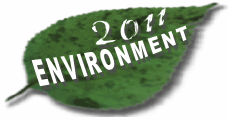
Environment
2011 |
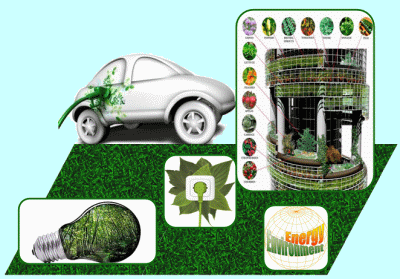 |
All energy sources affect the
environment. There is no such thing as a completely “clean”
energy source. Getting the energy we need affects our
environment in many different ways. Some energy sources have a
greater impact than others. Fortunately, the energy industry has
become increasingly aware of the importance of environmental
protection and is working to reduce its long-term impact.
To combat global warming and the other problems associated with
fossil fuels, Iraq must switch to renewable energy sources like
sunlight, wind, hydro power, and biomass. All renewable energy
technologies are not appropriate to all applications or
locations, however. As with conventional energy production,
there are environmental issues to be considered.
The impact of energy on the environment is determined by how
much energy is used and what form of energy we choose. The
objective of "Environment 2011" is to identifies
some of the key environmental impacts associated with fossil
fuels and also associated with renewable technologies, and
suggests appropriate responses to them.
26 June 2011
Najaf - Iraq
|

|
|
4

CFD
2012
Industrial Applications |
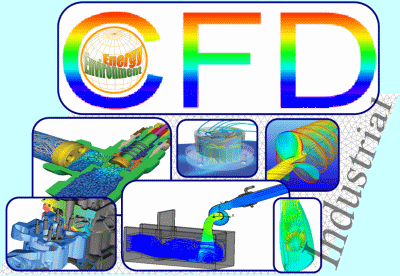 |
The use of Computational Fluid
Dynamics (CFD) to simulate and predict fluid flows, heat transfer and
associated phenomena continues to grow throughout many
engineering disciplines. On the back of ever more powerful
computers and graphical user interfaces CFD provides engineers
with a reliable tool to assist in the design of industrial
equipment often reducing or eliminating the need for performing
trial-and-error experimentation. Moreover, flow modelling
provides insights into our fluid flow problems that would be too
costly or simply prohibitive by experimental techniques alone.
The added insight and understanding gained from flow modelling
gives us confidence in our design proposals, avoiding the added
costs of over-sizing and over-specification, while reducing
risk. This allows us to investigate more design options and
"what if" scenarios than ever before. The "CFD 2012:
Industrial Applications"
aims to bring together academic scientists, leading engineers,
industry researchers and scholar students to exchange and share
their experiences and research results about the industrial
applications of Computational Fluid Dynamics (CFD), and discuss
the practical challenges encountered and the solutions adopted.
11 February 2012
Najaf - Iraq
|

|
|
5
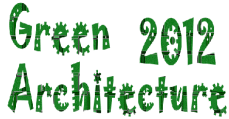
Green
Architecture
2012 |
 |
Green architecture, or green
design, is an approach to building that minimizes harmful
effects on human health and the environment. The "green"
architect or designer attempts to safeguard air, water, and
earth by choosing eco-friendly building materials and
construction practices.
Green Architecture 2012 will cover topics related
to the best practices required to bridge the gap between design
and service, challenges in operation and maintenance,
measurement and verification, etc. Low energy architecture,
high-performance buildings, building management systems, energy
efficient lighting design, passive cooling systems and water
management systems will be discussed at the conference, which is
dedicated to architects, consultants, engineers and
professionals working in the building industry.
15 April 2012
Najaf - Iraq
|

|
|
6

Green Building
&
Sustainable Development
2012 |
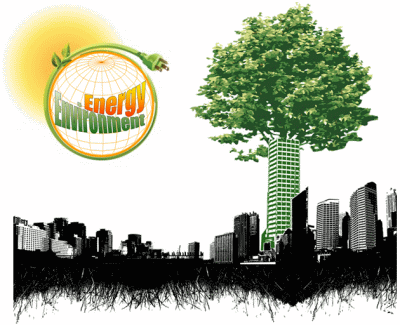 |
Green building refers to a
structure and using process that is environmentally responsible
and resource-efficient throughout a building's life-cycle: from
siting to design, construction, operation, maintenance,
renovation, and demolition. This requires close cooperation of
the design team, the architects, the engineers, and the client
at all project stages. The green buildings are designed to
reduce the overall impact of the built environment on human
health and the natural environment by: Efficiently using energy,
water, and other resources; Protecting occupant health and
improving employee productivity; Reducing waste, pollution and
environmental degradation.
Sustainable development is a pattern of growth in which resource
use aims to meet human needs while preserving the environment so
that these needs can be met not only in the present, but also
for generations to come.
Green Building and
Sustainable Development 2012 will bring together leading
sustainability professionals, academic scientists, leading
engineers, and stakeholders to discuss, debate and share best
practice on design, construction and the built environment.
Attendance will provide you with the very latest information on
the business and practical case for building and developing in a
sustainable manner.
Green Building and Sustainable Development 2012
provides exceptional building science and technology knowledge
on the principles and trends of green building. You'll learn
about these practices from well-known general session speakers,
be able to interact with industry experts and your peers during
education sessions. You'll get contacts, resources and ideas
that are good for your organization, your customers and your
bottom line.
|

|
|
7
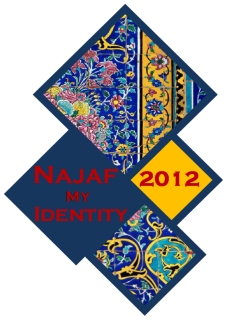
NAJAF my Identity 2012
|
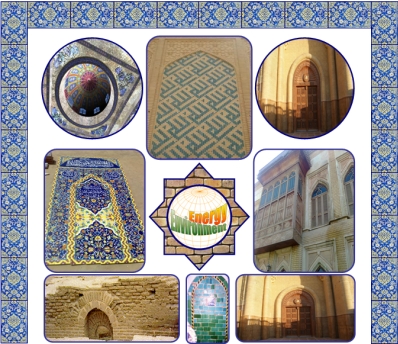 |
The International Symposium of
Najaf my Identity 2012 call for recovers and employ
the Najafi-Iraqi architectural theme into all buildings in whole Najaf city in general and in downtown in particular.
Najafi-Iraqi architectural theme was developed during more than 7000
years by the sequenced Iraqi civilizations. This unique theme is
considered to be one of the main figures of the Njafi identity
in particular and Iraqi identity in general.
Accordingly, the recovering and using of this theme means
tenacity in Najafi-Iraqi identity, where the spirit of
continuity with the Iraqi civilization heritage being dispread
and rooted.
The call to recovering the Iraqi-Najafic theme has a scientific
root and practical advantages, where the using of local
materials of construction is considered as a harmonization with
the environment of the city as well as the benefits of using
these materials in insulation and prevention the buildings from
the extremist weather and temperature scale.
The symposium of Najaf my Identity 2012 is a
serious attempt aiming to call all Najafic people to take this
responsibility on their shoulder and working together for Najaf
harmony with its highbred historical heritage.
22 September 2012
Najaf - Iraq
|

|
|
8
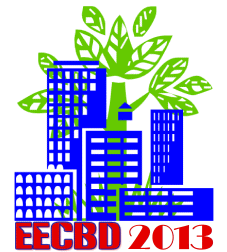
Energy
and Environment
Criteria in Building Design 2013 |
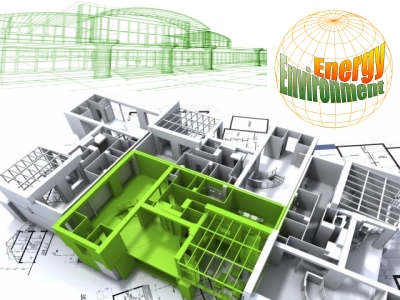 |
It is exciting to see the many
changes that have taken place in the construction industry and
the architectural/engineering professions over the last decade
in the promotion of environmentally responsible buildings.
Sustainable buildings use valuable resources such as energy,
water, materials, and land more efficiently than buildings that
are simply built to code. These green buildings are also kinder
to the environment, and provide indoor spaces that are generally
more healthy, comfortable, and productive. The main benefits of
building green include: Reducing energy consumption, Protection
of ecosystems, and Improved occupant health. Thousands of
projects have been built over the last decade, providing
tangible evidence of what green building can accomplish in terms
of improved comfort levels, aesthetics, and energy and resource
efficiency. National and local programs encouraging green
building are flourishing throughout the nation as well as
globally.
Energy and Environment Criteria in Building Design 2013
will bring together leading sustainability
professionals, architects, designers, academic scientists, and
leading engineers to discuss, debate and share best practice on
design, construction and the built environment. Attendance will
provide you with the very latest information on the business and
practical case for building and developing in a sustainable
manner. Energy and Environment Criteria in Building Design
2013 provides exceptional building science and
technology knowledge on the principles and trends of green
building.
26 January 2013
Najaf - Iraq
|

|
|
9

CFD
2013
Building and Urban Design |
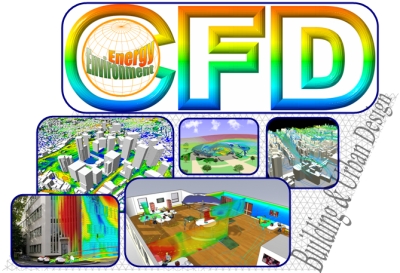 |
Design of buildings has to follow
rules and regulations particularly when it comes to human
comfort. Locations and dimensions of buildings relative to each
other have an important effect on the wind flow and its effect
on the surrounding areas. Building ventilation can affect
building performance in many ways. Efficient ventilation and
airflow improves occupant comfort and safety, enhances worker
productivity, increases equipment performance and longevity, and
reduces building maintenance and operating costs. One of the
major environmental concerns is the air pollution. Indoor and
outdoor air pollution are a main problem faced by designers and
engineers when designing ventilation inlets and outlets of a
building. CFD is used to calculate air movement, temperatures,
smoke migration, and chemical or particulate migration in any
indoor or outdoor environment. By using CFD early in the design
cycle, the design team may optimize the ventilation systems in
their buildings providing both a healthy environment for the
inhabitants and potential energy savings due to mechanical
system improvements.
The "CFD 2013: Building and Urban Design" aims to
bring together academic scientists, leading engineers,
researchers and scholar students to exchange and share their
experiences and research results about the roles of CFD in
building design, demonstrating its typical application in
designing a thermally-conformable, healthy and energy-efficient
building.
2 February 2013
Najaf - Iraq
|

|
|
10

Kids' Environment 2013 |
 |
Everything we do has an impact on
the world around us-from the clothes we wear and food we eat to
the gardens we grow and the trash we throw away. And to take the
best care of the earth-and ourselves-it's important to make
smart choices.
Kids' Environment 2013 environmental education
program for youth who care about the planet. It offers
interactive, fun, educational games and activities that utilize
participants’ willingness to learn. Children are encouraged to
form their own opinions, make decisions, get involved and
understand the impact their own actions have on the environment.
Kids' Environment 2013 promotes a greater
understanding and respect for animals, plants, water, soil, air
and energy systems. Helps children comprehend the positive and
negative environmental effects of our actions, to get kids
excited about protecting the environment.
21 March 2013
Najaf - Iraq
|

|
|
11

|
 |
Computational Fluid Dynamics (CFD)
is computer-based simulation of predicting what will happen when
fluids (gases & liquids) flow. CFD complements experimental and
analytical approaches by providing an alternative cost-effective
mean of simulating real-life flow problems. CFD has now become a
leading research, educational, and design tool. It is being used
to better understand physical events and processes and perform
numerical experiments. Most importantly, it has now become a
design tool by providing capabilities to facilitate design
optimization, reduce design bottlenecks and improve engineering
performance, enhance communications, and answer what-if
questions. CFD is now routinely used to solve complex flow
problems in vast number of industrial applications.
The aim of the course
"Introduction to CFD" is to provide an introduction to
the theory and application of computational techniques for
predicting fluid flow and heat and mass transfer in engineering
applications, industrial plant, and equipment. Lectures are
given on the main elements of the methodology underlying the
majority of CFD computer codes, including the governing
differential equations and numerical methods for solving them.
The lectures are complemented by tutorials. The lectures are
followed by a coursework project in which the users will gain
experience in the use of commercial CFD software package to
explore a range of flow problems.
5-10
April 2013
Najaf - Iraq
|

|
|
12
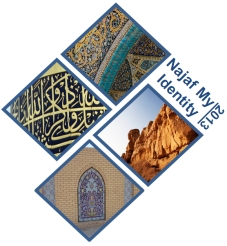
NAJAF my Identity 2013
|
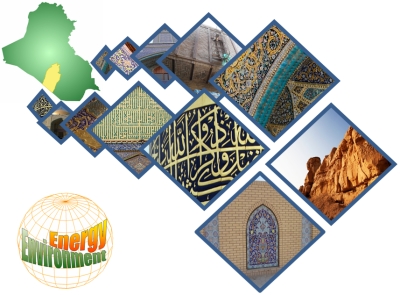 |
The continuation of the conference
Najaf My Identity 2012 and in order to achieve all the goals
that called for, the organizer of the conference, the
International Energy and Environment Foundation (IEEF)
establishes Najaf My Identity 2013. Conference
Najaf My Identity 2013 comes in order to formulate a
management list to keep the heritage and urban identity of the
holy city of Najaf, which includes a set of standards that would
save the urban patterns in the old city and highlight its
distinctive civilization. This management list has been
formulated based on international charters on urban heritage and
religious cities, which have been prepared by the International
Council on Monuments and Sites (ICOMOS) and United Nations
Educational, Science and Cultural Organization (UNESCO). The preservation of the
identity of Najaf is done through three basic themes: Keep all
the heritage places of the city of Najaf, with its sense of the
patterns of urban and distinctive heritage, and maintain it from
erosion and extinction, and in accordance with the international
standards; The development of standards and regulations that
govern the process of designing buildings to be built in the old
city of Najaf and in line with the features and patterns
inherent architectural and heritage of the city; and Preserving
the traditional renewable energy systems and sustainability
principles in the heritage buildings of the old city of Najaf,
and collect, disseminate and promote research in the area of
energy conservation and sustainable development in those
buildings.
In order to succeed all these efforts, the organizer of the
conference was keen to invite all stakeholders in this regard;
Iraqi and international experts, academics, decision-makers in
the government and local executive bodies associated with them,
community figures, and activists citizens of the city. We hope
that this management list will be model regulations in order to
preserve the identity of all Iraqi cities.
26 October 2013
Najaf - Iraq
|

|
|
13

|
Prize for Preserve the Architectural Heritage
Identity of the Cities
In order to encourage
the Iraqi society to hold on the Precious heritage value of
Iraqi heritage cities and preserve its identity, the
International Energy and Environment Foundation (IEEF) has
decided to grant an annual Prize for Preserve the Architectural
Heritage Identity of the Cities, for two buildings, the first
one for an old heritage building maintained by its owners and
the other one grants to a modern building was designed according
to the architectural heritage theme that constitute the identity
of the city.
26 October 2013
Najaf - Iraq
|

|
|
14

CFD
2014
Engineering Design |
 |
The use of Computational Fluid
Dynamics (CFD) to simulate engineering phenomena continues to
grow throughout many engineering disciplines. On the back of
ever more powerful computers and graphical user interfaces CFD
provides engineers with a reliable tool to assist in the design
of industrial equipment often reducing or eliminating the need
for performing trial-and-error experimentation. The results of
CFD analyses are relevant in: conceptual studies of new designs,
detailed product development, troubleshooting, and redesign. CFD
analysis complements testing and experimentation, by reduces the
total effort required in the experiment design and data
acquisition. In many cases, we can build and analyze virtual
models at a fraction of the time and cost of physical modelling.
This allows us to investigate more design options and "what if"
scenarios than ever before. The added insight and understanding
gained from engineering design modelling gives us confidence in
our design proposals, avoiding the added costs of over-sizing
and over-specification, while reducing risk.
The "CFD 2014: Engineering Design" aims to bring
together academic scientists, leading engineers, researchers and
scholar students to exchange and share their experiences and
research results about the roles of CFD in engineering design
and development.
28 March 2014
Najaf - Iraq
|

|
|
15
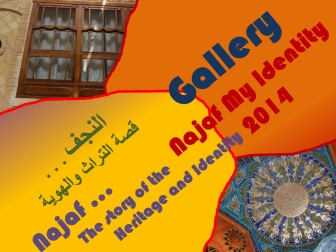
|
Najaf my Identity 2014 Gallery: Najaf . . .
the Story of Heritage and Identity
In Continuing in our
civilizational and cultural project "Najaf my Identity",
this gallery "Najaf . . . the Story of Heritage and
Identity" comes to define the heritage and identity of
the holy city of Najaf and sheds light on the "Najaf Charter",
which was prepared within the context of this project. The "Najaf
Charter" aims to conserve the identity of the holy city of Najaf
and all the Iraqi cities, according to the following themes:
- Keep all the heritage
places of the city of Najaf, with its sense of the patterns of
urban and distinctive heritage, and maintain it from erosion and
extinction, and in accordance with the international standards.
- The development of
standards and regulations that govern the process of designing
buildings to be built in the old city of Najaf and in line with
the features and patterns inherent architectural and heritage of
the city.
- Preserving the
traditional renewable energy systems and sustainability
principles in the heritage buildings of the old city of Najaf,
and collect, disseminate and promote research in the area of
energy conservation and sustainable development in those
buildings.
12 April 2014
Najaf - Iraq
|

|
| |
| |